- Home
- Robin Cook
Intervention sam-9 Page 2
Intervention sam-9 Read online
Page 2
“I don’t expect an answer,” Laurie added. “I’m just thinking out loud. I’d like to be doing something for our baby. I hate to think of those neuroblastoma cells having a free ride.”
2
12:00 NOON, MONDAY, DECEMBER 1, 2008
CAIRO, EGYPT
(5:00 A.M., NEW YORK CITY)
Shawn Daughtry had the Egyptian taxi driver stop at the al-Ghouri mausoleum, the tomb of the Mamluk leader who’d turned the rule of Egypt over to the Ottomans early in the sixteenth century. Shawn’s last visit had been ten years earlier, with his third wife. He was now back with his fifth wife, the former Sana Martin, and enjoying the visit considerably more than his first. Sana had been invited to participate in an international conference on genealogical tracking. As a celebrated molecular biologist with a specialty in mitochondrial genetics, which had been the subject of her Ph.D. thesis, she was one of the conference’s star speakers. Benefits included an all-expenses-paid trip for the two of them. Shawn had taken advantage of the opportunity by making arrangements to attend a concurrent archaeology conference. As it was the last day of the meeting, he’d skipped the concluding luncheon to accomplish a very specific errand.
Shawn stepped from the taxi and into the sweltering, dusty heat, crossing the bumper-to-bumper traffic on al-Azhar Street. Every car, truck, bus, and taxi honked its horn while pushcarts and pedestrians threaded their way between the mostly stationary vehicles.
Traffic in Cairo was a disaster. In the ten-year interval since Shawn’s last visit, the population of metropolitan Cairo had swelled to a staggering 18.7 million people.
Shawn headed up al-Mukz li-Den Allah Street and into the depths of the narrow-laned Khan el-Khalili souk. The labyrinthian fourteenth-century bazaar sold everything from housewares, clothes, furniture, and foodstuffs to cheap souvenirs. Yet none of these interested him. He headed to the area that specialized in antiquities, searching out a shop he remembered from his previous visit called Antica Abdul.
Shawn was a trained archaeologist, and at fifty-four years old was at the peak of his career, heading the department of Near Eastern art at the Metropolitan Museum of Art in New York City. Although his main interest was biblical archaeology, he was an authority on the entire Middle East, from Asia Minor through Lebanon, Israel, Syria, Jordan, and Iran. Shawn had been dragged into the market on his last visit by his then wife, Gloria.
Separated in the midst of the twisting lanes, Shawn had stumbled upon Antica Abdul.
He’d been captivated by a stunning example in the shop’s dusty window of a six-thousand-plus-year-old predynastic, unbroken piece of terra-cotta pottery decorated with a design of counterclockwise swirls. At that time there was an almost identical pot on prominent display in the ancient Egyptian section of the Metropolitan Museum, though the piece in Antica Abdul’s window was in better shape. Not only was the painted design in superior condition, but the museum’s pot had been found in pieces and had needed to be completely restored. Fascinated but also convinced Antica Abdul’s pot was, like many other supposedly ancient antiquities in the bazaar, a clever fake, Shawn had entered the shop.
Although he had intended to make a cursory examination of the pot and then return to the hotel, he’d ended up staying for several hours. His furious wife, suspicious of his skulduggery and abandonment of her, had even beaten him back to the hotel. When he finally did return, she’d laid into him mercilessly, claiming she could have been kidnapped. As Shawn reminisced about the incident, he realized how auspicious such a denouement would have been. It would have made the divorce proceedings a year later that much easier.
What had kept Shawn in the shop for so long was essentially a free lesson in traditional Egyptian hospitality. And what started out as an argument with the proprietor over the authenticity of the pot ended up becoming a captivating discussion of the widespread market of cleverly made fake Egyptian antiquities over many cups of tea. Although Rahul, the owner of the shop, insisted the pot was a true antiquity, he was willing to share all the tricks of the trade, including the thriving scarab market, when he learned Shawn was an archaeologist. Scarabs, the carved talismans of the ancient Egyptian dung beetle, were considered to have the power of spontaneous regeneration. Using an inexhaustible source of bone from ancient cemeteries in Upper Egypt, talented carvers re-created the scarabs, then fed them to various domestic animals to impart a convincing patina. It was Rahul’s contention that many of the pharaonic scarabs in the world’s top museums were such forgeries.
After the long conversation, Shawn had bought the pot as a way of thanking Rahul for his hospitality. After some friendly haggling, Shawn paid half of what Rahul initially asked. Even so, Shawn thought that two hundred Egyptian pounds was more than double what he should have paid, at least until he got back to New York. Taking the pot to his colleague Angela Ditmar, head of the Egyptology department, Shawn was in for a shock.
Angela determined that the pot was not a fake but instead a genuine relic and definitely more than six thousand years old. Shawn ended up donating the piece of pottery to the Egyptian department to replace the restored pot on permanent display to assuage the guilt he felt for having unknowingly spirited the valuable object out of Egypt.
Shawn walked deeper into the true depths of the bazaar. Stretching across the narrow lanes between the buildings were carpets and awnings effectively blotting out the sunlight. Passing butcher shops with hung lamb carcasses complete with skulls, eyeballs, and flies, Shawn was enveloped in the pungent aroma of offal, soon replaced by the smell of spices and then roasting Arabic coffee. The souk was an assault on the senses, both good and bad.
In the midst of converging alleyways, Shawn paused, lost, as he’d been ten years ago.
Stopping in a tailor shop, he asked directions from an elderly Egyptian in a white skullcap and brown djel laba. A few minutes later he walked into Antica Abdul. Shawn was not at all surprised the shop was still there. On his previous visit, Rahul had said that the establishment had been in his family for more than a hundred years.
Except for the lack of the fantastic predynastic pot, the shop looked essentially the same.
Since most of the so-called antiquities were fake, Rahul just kept on replacing them from his sources as they sold.
The shop appeared unattended as Shawn entered, the glass-beaded strings clacking into place behind him. For a moment Shawn wondered if Rahul would still be there, but any concern evaporated as the man quickly emerged through the dark drapes separating a pillow-strewn sitting area from the front part of the shop. Rahul motioned a greeting with a slight tilting of his head as he stepped behind an old glass-topped counter. He was a heavy-boned, full-lipped former fellahin who’d transitioned easily into an adroit businessman. Without a word, Shawn advanced a few steps and stared into the shopkeeper’s dark, fathomless eyes. Almost immediately, Rahul’s eyebrows knitted and then wrinkled upward with recognition.
“Dr. Daughtry?” Abdul questioned. He leaned slightly forward to get a better look.
“Rahul,” Shawn replied, “I’m shocked that you remember me, much less my name after all these years.”
“How could I not?” Rahul said, rushing from behind his counter and pumping Shawn’s hand. “I remember all my clients, particularly those from famous museums.”
“You have clients at other museums?” The shop was so modest it seemed farfetched.
“Of course, of course,” Rahul intoned. “Whenever I get something special, which isn’t too often, I communicate with whom-ever I think would be the most interested. It’s so easy now with the Internet.”
While Rahul hastened out into the alleyway by pushing through the beads and barking orders in Arabic, Shawn marveled at the speed of globalization. It seemed to him the Internet and the ancient Khan el-Khalili should have been worlds apart. Obviously, such was not the case.
A moment later, Rahul reentered the shop and gestured for Shawn to pass beyond into the seating area at the rear of the store. Oriental ca
rpets covered the floor and the walls.
Large, heavy brocade pillows dominated the space. A hookah stood to the side, along with a number of stacked, faded cardboard boxes. A bare lightbulb dangled from the ceiling. On a small wooden table were a few faded photographs, one of a large man in typical Egyptian dress who resembled Rahul. Rahul followed Shawn’s line of sight.
“A photo of my uncle, given to me recently by my mother. Almost twenty years ago he owned this shop.”
“He does look like family,” Shawn commented. “Did you buy the shop from him?”
“No, from his wife. He was my mother’s brother, but he got himself mixed up in an antiquities scandal involving a very important find: an intact tomb. His association cost him his life. He was killed here in the shop.”
“My goodness,” Shawn voiced. “I’m so sorry to have brought it up.”
“In this business one cannot be too careful. Allah be praised that I have had no such trouble.”
In the next instant the heavy curtain was drawn aside and a barefoot young boy appeared with a tray and two glasses in metal holders, each filled with steaming-hot tea. Without a word the boy placed the tray on the floor next to Shawn and Rahul, then retreated back through the curtains. All the while Rahul maintained a lively chatter about how pleased he was to enjoy a visit from Shawn.
“Actually, I had a specific reason,” Shawn admitted.
“Oh?” Rahul replied questioningly.
“I have a confession to make. When I was last here in your shop, I bought a predynastic terra-cotta pot.”
“I remember. It was one of my very best.”
“We had a rather lengthy argument about its authenticity.”
“You were reluctant to be convinced.”
“Actually, I was never convinced. I bought it as a souvenir of our most interesting conversation, but when I got back to New York, I had it looked at by a knowledgeable colleague. She agreed with you. Not only was it real, but the pot is now on prominent display in the museum. It is truly a handsome piece.”
“You are so kind to admit your error.”
“Well, it has bothered me all these years.”
“That is easy to remedy,” Rahul responded. “If you would like to appease your conscience, all you need to do is pay me additional money.” Taken aback by the unexpected suggestion, Shawn stared at Rahul. For a moment he thought the man was serious. Then Rahul smiled, exposing his yellow, poorly maintained teeth. “I am joking, of course. I made a handsome profit with the pot from the children who found it, and I am satisfied.”
Shawn smiled himself with obvious relief. He found Arabic humor as unexpected as Arabic hospitality.
“Your confession has brought to mind a most amazing piece I got only yesterday from a fellahin friend who is a farmer in Upper Egypt. It’s something you might find of particular interest, given your biblical scholarship. With this particular object you will know more than I, so I trust you will not cheat me if you decide to buy it. Would you like to see it?”
Shawn shrugged. “Why not,” he said. He didn’t know what to expect, and he wasn’t about to get his hopes up.
After rummaging in one of the cardboard boxes pushed against the wall, Rahul pulled out what looked to be a soiled cotton pillowcase. It wasn’t until he’d sat back down that he removed the contents and placed them in Shawn’s hands.
For several beats Shawn did not move while Rahul sat back and made himself comfortable against his large pillows. He wore an expectant, self-satisfied expression.
He knew the archaeologist would soon guess what he was holding. The question was whether he’d be willing to buy it. The illegal cache needed the right person, one with relatively deep pockets.
Shawn quickly surmised what it was. Like most biblical scholars worth their salt, particularly those interested in New Testament studies or early Christian Church history, he’d seen and even handled the originals. The question was: Was what he was holding genuine, or was it a fake, like the scarabs and most of the other imitation antiquities that Rahul sold? Shawn had no idea, but given the unexpected authenticity of the predynastic bowl, he was willing to gamble and buy what he had in his lap. If by some chance it was real, it could be the biggest discovery of his life, and even if he eventually returned it to the Egyptian authorities, it was the kind of object whose story alone would set him apart from his contemporaries. Shawn didn’t want one of Rahul’s major museum contacts to get it—a distinct possibility, given his Internet contacts.
“Of course it is not real,” Shawn began, in an attempt to start the haggling on the right foot. The problem was that despite the modest appearance of the shop, he knew he was dealing with a professional, business-savvy negotiator.
3
6:05 A.M., MONDAY, DECEMBER 1, 2008
NEW YORK CITY
(1:05 P.M., CAIRO, EGYPT)
You’re a doctor?” the uniformed policeman questioned with exaggerated surprise. The policeman’s car was pulled to the curb behind them on the west side of Second Avenue as morning traffic streamed past on its way downtown. The cop’s partner was still sitting in the passenger seat, drinking coffee. Jack’s relatively new Trek bike was lying on its side on the pavement just in front of the cruiser. When Laurie had started her maternity leave, Jack had gone back to his old habit of commuting to the Office of the Chief Medical Examiner by bicycle.
Jack just nodded. Although he was calmer than he’d been, he was still irritated as hell at the taxi driver who’d cut him off by pulling across four lanes of traffic and stopping on a dime to pick up a fare. After managing to stop himself with just a minor jolt against the car’s rear bumper, Jack had dashed around to the driver’s side before the customer had gotten seated in the back. Jack had quickly inflicted several small but definite dents in the cabdriver’s side door with his heel in hopes of encouraging the driver to climb out of the car so that a proper discussion could ensue. Lucky for everyone, the incident was brought to a rapid close by the arrival of the police. Apparently, the cops had witnessed at least some of the confrontation.
“I think you could use some anger-management classes,” the policeman continued.
“I’ll take that under advisement,” Jack said sarcastically. He knew he was being provocative, but he couldn’t help himself. The policeman had dismissed the cabdriver without even checking his license. It was as if the cop thought the incident was Jack’s fault, since he was the one being detained.
“You’re on a bike, for crying out loud,” the cop complained. “What do you want to do, get yourself killed? If you are going to be crazy enough to ride a bike you have to expect the unexpected, particularly from cabbies.”
“I’ve always felt New York City taxis and I could share the road.” With a final head shake and a roll of his eyes, the policeman handed back Jack’s driver’s license. “It’s your funeral,” he said, washing his hands of the affair.
Irritably, Jack picked up his bike, climbed on, started pumping, and rapidly pulled away from the police car even before the officer had climbed back into his cruiser. Soon the frenzy of the traffic, the icy wind, and the sustained exertion cooled his hot blood.
Reaching the optimal speed of nearly twenty miles per hour, he was able to make the lights all the way to 42nd Street. As he waited for the green, panting for breath, he had to admit the policeman had been right. Hungry cabdrivers were always going to stop for a fare without regard for their surroundings. By failing to be a defensive rider, Jack was slipping into the patho logically destructive behavior that had put him at risk in the af termath of his wife and daughters’ deaths. Jack knew that he couldn’t afford such selfishness. Laurie and John Junior needed him. If the family was going to beat the neuroblastoma, they had to do it as a team.
Arriving at the Office of the Chief Medical Examiner at the corner of First Avenue and 30th Street, Jack crossed the wide avenue and made his way to the building’s driveway.
Although the OCME building looked the same from First Avenue
as it had when it was built in the sixties, changes had been made, particularly after 9/11. The old loading dock had been replaced by a larger parking area and a series of rollaway garage doors to accommodate the arrival of multiple vehicles with their corpses. Also gone was the herd of aged brown mortuary vans with HEALTH AND HOSPITAL CORP. stenciled on the sides parked helter-skelter all over 30th Street, replaced by an orderly fleet of new white vans. And instead of having to carry his bike into the morgue, Jack just rode it into one of the garages, where he could leave it safely in full view of a much better managed security office.
Inside the OCME were more changes. With the department’s importance highlighted after 9/11, it was rewarded by the legislature with more personnel, equipment, and space. A brand-new building had been built a few blocks down First Avenue to house the expanded department of forensic biology, including, in particular, the DNA laboratory.
Though the OCME of New York City had once fallen on hard times because of budget cuts, losing its famed countrywide leadership in the field of forensics, those days were past.
Jack now had more than thirty medical examiner, or M.D. forensic pathologist, colleagues across the city. The number of non-M. D. forensic investigators in the Manhattan office had been increased, their titles changed. No longer referred to as physician’s assistants, they were now called medicolegal investigators, or MLIs. There were also eight new forensic anthropologists on staff, in addition to the forensic odontologists that Jack and the other MEs could tap for appropriate cases.
Jack had also personally benefited from all the growth and change. Along with the entire DNA and serology departments, other divisions including records, administration, legal, and human resources had moved to the new high-rise building, freeing space in the old building. All medical examiners now had their own, separate offices on the third floor.
In addition to his desk, Jack now had his own lab bench, which meant he could leave out his microscope, slides, and paperwork without fear it would be disturbed.
Jack walked into the building, vowing to rise above his raw emotions and focus on his work. Feeling suddenly as if he were on a mission, he didn’t wait for the back elevator but took the stairs. He quickly traversed the new sudden infant death syndrome offices and cut through the old medical records room, which now housed the warren of new investigator cubbies. The graveyard shift of medicolegal investigators was finishing up reports for the seven-thirty shift change. Jack gave a cursory wave to Janice Jaeger, the night-shift investigator he’d known since he’d started work at OCME, and with whom he frequently partnered.

 Shock
Shock Mutation
Mutation Chromosome 6
Chromosome 6 Brain
Brain Intervention
Intervention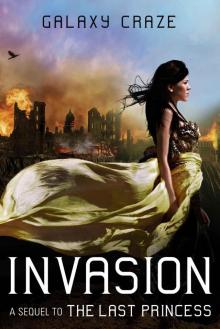 Invasion
Invasion The Legend of Parzival: The Epic Story of His Quest for the Grail
The Legend of Parzival: The Epic Story of His Quest for the Grail Acceptable Risk
Acceptable Risk Cell
Cell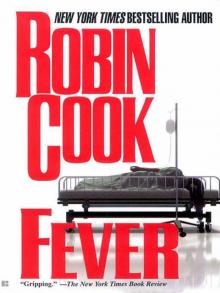 Fever
Fever Death Benefit
Death Benefit Contagion
Contagion Mindbend
Mindbend Coma
Coma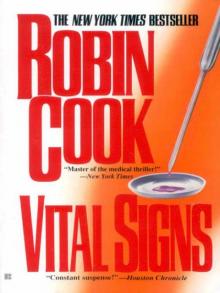 Vital Signs
Vital Signs Harmful Intent
Harmful Intent Critical
Critical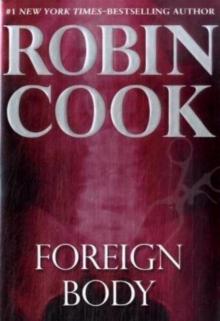 Foreign Body
Foreign Body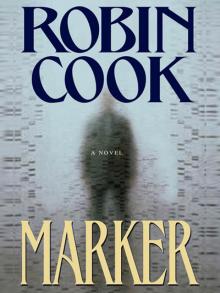 Marker
Marker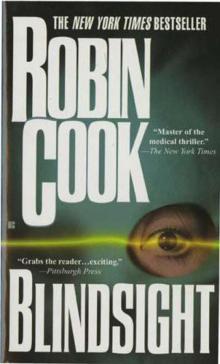 Blindsight
Blindsight Terminal
Terminal Sphinx
Sphinx Fatal Cure
Fatal Cure Host
Host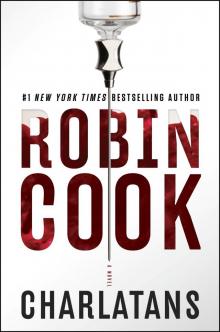 Charlatans
Charlatans Crisis
Crisis Vector
Vector Toxin
Toxin Abduction
Abduction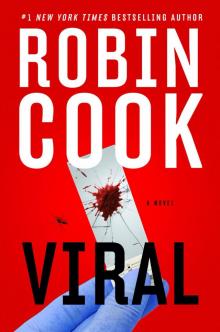 Viral
Viral Pandemic
Pandemic Outbreak
Outbreak Vector js&lm-4
Vector js&lm-4 Godplayer
Godplayer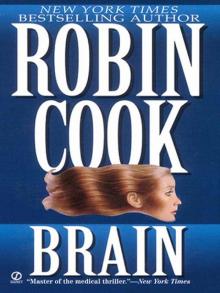 A Brain
A Brain Year of the Intern
Year of the Intern Outbreak dmb-1
Outbreak dmb-1 Cure
Cure Mortal Fear
Mortal Fear The Legend of Parzival
The Legend of Parzival Vital Signs dmb-2
Vital Signs dmb-2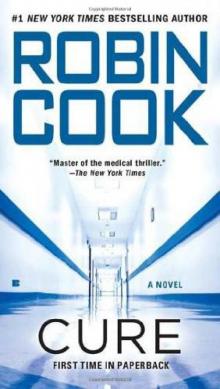 Cure (2010) sam-10
Cure (2010) sam-10 Blindsight sam-1
Blindsight sam-1 The Year of the Intern
The Year of the Intern Intervention sam-9
Intervention sam-9 Foreign Body sam-8
Foreign Body sam-8